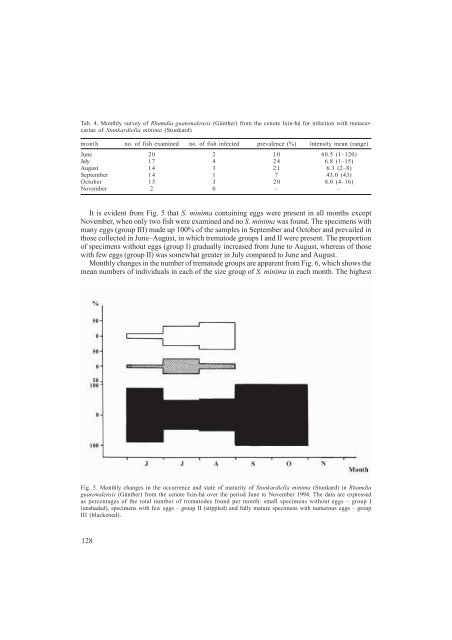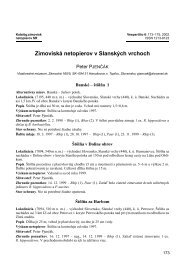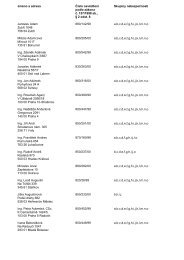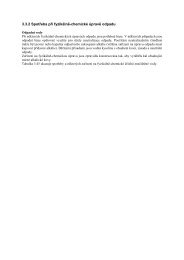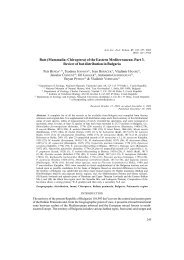Gyraulus parvus (Mollusca: Gastropoda) in the Czech Republic
Gyraulus parvus (Mollusca: Gastropoda) in the Czech Republic
Gyraulus parvus (Mollusca: Gastropoda) in the Czech Republic
- No tags were found...
You also want an ePaper? Increase the reach of your titles
YUMPU automatically turns print PDFs into web optimized ePapers that Google loves.
Tab. 4. Monthly survey of Rhamdia guatemalensis (Gün<strong>the</strong>r) from <strong>the</strong> cenote Ix<strong>in</strong>-há for <strong>in</strong>fection with metacercariaeof Stunkardiella m<strong>in</strong>ima (Stunkard)month no. of fish exam<strong>in</strong>ed no. of fish <strong>in</strong>fected prevalence (%) <strong>in</strong>tensity mean (range)June 20 2 10 60.5 (1–120)July 1 7 4 2 4 6.8 (1–15)August 14 3 21 6.3 (2–8)September 14 1 7 43.0 (43)October 15 3 20 8.0 (4–16)November 2 0 – –It is evident from Fig. 5 that S. m<strong>in</strong>ima conta<strong>in</strong><strong>in</strong>g eggs were present <strong>in</strong> all months exceptNovember, when only two fish were exam<strong>in</strong>ed and no S. m<strong>in</strong>ima was found. The specimens withmany eggs (group III) made up 100% of <strong>the</strong> samples <strong>in</strong> September and October and prevailed <strong>in</strong>those collected <strong>in</strong> June–August, <strong>in</strong> which trematode groups I and II were present. The proportionof specimens without eggs (group I) gradually <strong>in</strong>creased from June to August, whereas of thosewith few eggs (group II) was somewhat greater <strong>in</strong> July compared to June and August.Monthly changes <strong>in</strong> <strong>the</strong> number of trematode groups are apparent from Fig. 6, which shows <strong>the</strong>mean numbers of <strong>in</strong>dividuals <strong>in</strong> each of <strong>the</strong> size group of S. m<strong>in</strong>ima <strong>in</strong> each month. The highestFig. 5. Monthly changes <strong>in</strong> <strong>the</strong> occurrence and state of maturity of Stunkardiella m<strong>in</strong>ima (Stunkard) <strong>in</strong> Rhamdiaguatemalensis (Gün<strong>the</strong>r) from <strong>the</strong> cenote Ix<strong>in</strong>-há over <strong>the</strong> period June to November 1994. The data are expressedas percentages of <strong>the</strong> total number of trematodes found per month: small specimens without eggs – group I(unshaded), specimens with few eggs – group II (stippled) and fully mature specimens with numerous eggs – groupIII (blackened).128


